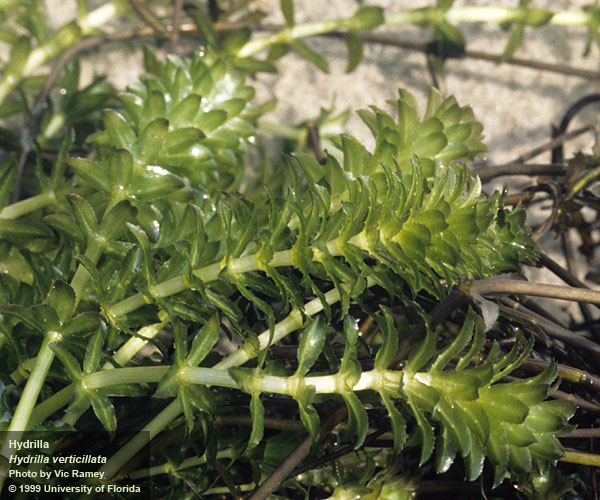
by Brooke Saari | Mar 5, 2014
March 5th: Torpedo Grass (Panicum repens) & Hydrilla (Hydrilla verticillata)
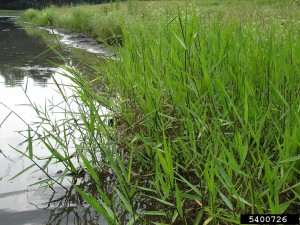
Torpedo Grass Photo Credit: Graves Lovell, Alabama Department of Conservation & Natural Resources, www.bugwood.org
Torpedo Grass: Torpedo grass (Panicum repens) is an invasive weed that invades lawns, flowerbeds, landscapes and wetlands. Even if introduced into a small area, this weed can rapidly spread to become a monoculture and crowd out native vegetation. Its name is derived from the hard, sharp point of the rhizome that looks like a torpedo.
Native to Africa and Asia, Torpedo Grass was introduced to the United States around 1876, primarily through seed used for forage crops. The real infestation came in the early part of the 20th century when the USDA imported and distributed seed for planting pastures as forage for cattle. It proved to be inferior for use as a forage crop. Now it is found in the Gulf South from Florida to Texas and in other coastal areas around the world.
Torpedo grass is nearly impossible to completely eliminate, so management of it is not a matter of how to get rid of it completely but instead how to prevent it from taking over an area. The only way that this can be accomplished is with repeated and frequent efforts. You will have to scout regularly and any time torpedo grass is seen, promptly take action. Prevention of torpedo grass centers on removal of the entire plant, as the plant can regrow from fragments left behind in the soil. There are few control options for torpedo grass. Options will depend on its location and surrounding vegetation. For management in lawns please refer to http://edis.ifas.ufl.edu/ep387 for specific herbicide controls based predominate lawn species. For management of invasive species in natural areas, refer to http://edis.ifas.ufl.edu/wg209 for a comprehensive list of species and their controls. As always, refer to instructions on herbicide label to ensure proper usage.
For more information contact the author Brooke Saari, Sea Grant Marine Science Extension Agent, 850-689-5850.
Hydrilla: Hydrilla is a perennial submerged plant that grows in dense mats up to the surface of freshwater habitats, including ponds, lakes, springs, and rivers. Growing at the rapid rate

Hydrilla Photo Credit: Vic Ramey, UF/IFAS Center for Aquatic and Invasive Plants.
of an inch a day and up to 25 feet long, hydrilla shades out beneficial native plants and clogs waterways, preventing flood control, boating, and fishing. In dense populations, the plant can alter oxygen levels and water chemistry and survive in a wide variety of nutrient conditions, sunlight availability, and temperatures.
Originating in Asia, it was introduced to Florida (likely through Tampa and Miami) in the 1950’s as part of the worldwide aquarium trade. Hydrilla has become a very expensive problem for the state. Millions are spent annually on chemical and mechanical treatment simply to maintain the plant. Adding to the problem is the fact that it is still available commercially, even though it has been placed on the US Federal Noxious Weed List. In the United States, the plant is found as far north as Connecticut and west to California and Washington.
Methods of control include mechanical harvesters and chopping machines (although fragments of hydrilla left in the water can regrow), introduced insects and fish (particularly the Chinese grass carp), aquatic herbicides, and lake drawdowns. Hydrilla is often transported from one body of water to the other by unknowing boaters moving fragments of the plant left on boats, trailers, or live wells, so learning to identify the plant and cleaning boats before leaving the ramp are helpful in prevention. Visit the Extension Hydrilla IPM site for more helpful tips.
For more information contact the author Carrie Stevenson, Coastal Sustainability Agent at 850-475-5230.
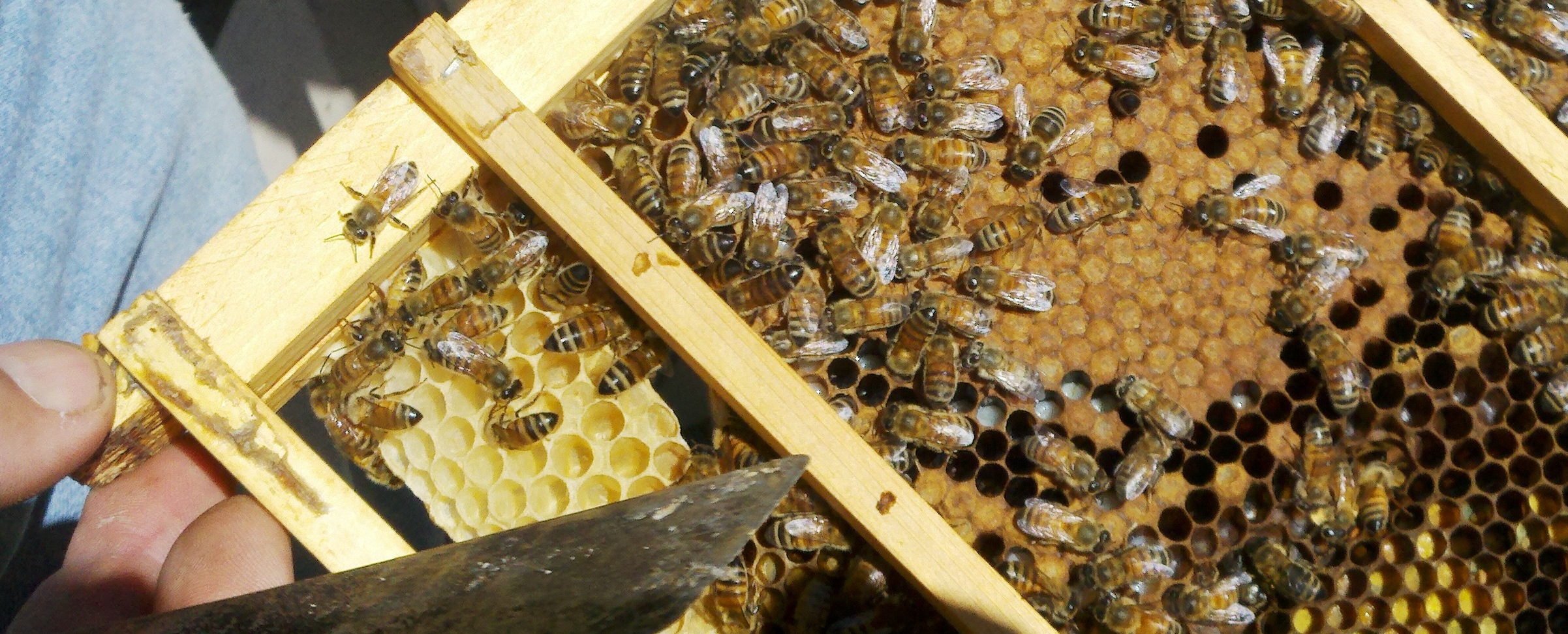
by Judy Biss | Feb 7, 2014

Photo by Judy Ludlow
The UF/IFAS Panhandle Agriculture Extension Team will once again be offering a Basic Beekeeping School in February and March. These classes will be offered via interactive video conferencing at Extension Offices across the Panhandle. Details are listed below, please call your local UF/IFAS Extension Service to register and if you have any questions. See you there!
- These classes will be taught by Dr. Jamie Ellis and other state and nationally recognized beekeeping experts from the University of Florida Honey Bee Research and Extension Lab and the Florida Department of Agriculture & Consumer Services Bureau of Plant and Apiary Inspection.
- There will be three Monday-evening and one Tuesday evening interactive video conferences from 6:00 – 8:00 pm Central time, (7-9 pm Eastern time) and a Saturday bee-yard field day.
- Each 30-50 minute presentation will be followed by a question/answer period
February 24: Honey Bee Biology and Anatomy
March 3: Varroa Mite Biology and Control
March 10: Honey Bees of the World and Beekeeping History
March 15: Bee-Yard Field-Day – A hands on teaching opportunity
March 18: Yearly Management of the honey bee
- The cost for all five classes is $25 per person or $40 for a family. This fee will cover course materials and refreshments.
- Deadline to register is February 17, 2014. Please contact your local UF IFAS Extension office to register or to find out more details, or click on the following link for a printer-friendly flyer: 2014 Beekeeping in Panhandle
Bay County 850-784-6105
Calhoun County 850-674-8323
Escambia County 850-475-5230
Franklin County 850-653-9337
Gadsden County 850-875-7255
Gulf County 850-639-3200
Holmes County 850-547-1108
Jackson County 850-482-9620
Jefferson County 850-342-0187
Leon County 850-606-5202
Liberty County 850-643-2229
Okaloosa County 850-689-5850
Santa Rosa County 850-623-3868
Wakulla County 850-926-3931
Walton County 850-892-8172
Washington County 850-638-6180
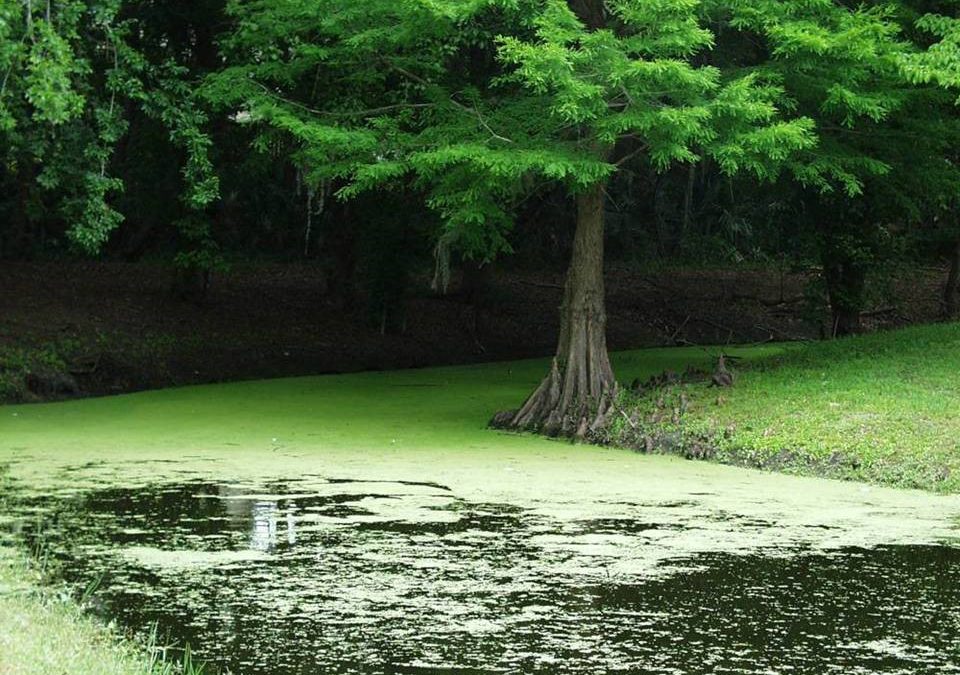
by Carrie Stevenson | Jan 11, 2014
Beginning New Year’s Day of 2014, a new law went into effect that state lawmakers, environmental advocates, and lawn care professionals hope will reduce Florida’s decades-long problem with stormwater runoff pollution. The law states that all lawn care professionals applying fertilizer as part of their business must pass a Green Industries Best Management Practices (GI-BMP) test and receive a certification commonly referred to as a “fertilizer license.” The Florida Departments of Agriculture and Consumer Services and Environmental Protection maintain the records and regulatory authority over these licenses.
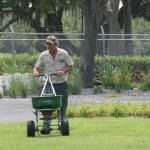
Lawn care service providers applying fertilizer to Florida landscapes are now required to complete best management training. Photo credit: UF IFAS
Fertilizer becomes a problem in the environment when either too much is applied or it is used at the incorrect rate or wrong time. Rain or irrigation water can move these nutrients (remember, fertilizer is mostly composed of nitrogen, potassium, and phosphorus) off target, leaching them into the soil and groundwater or running off into surface waters.
Once in a creek, lake, river, or bay, this fertilizer intended to improve growth of turf or landscape plants instead fuels the growth of algae. In certain conditions this causes eutrophication, an overabundance of algae growth which gives water bodies a green, scum-covered appearance. As this plant material eventually breaks down, it uses up oxygen in the waters below, reducing the amount available for fish and other aquatic species. These scenarios can lead to fish kills and reduced water quality.
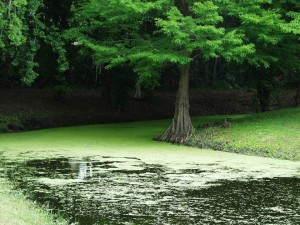
A body of water receiving excess nutrients can turn green and unhealthy from too much algae growth. Photo Credit: UF IFAS FFL program
The new legislation encourages professional lawn care staff to take a day-long course covering these concepts, and additional topics such as irrigation, pest management, and proper landscaping practices. The course, offered online and in every UF IFAS Extension office, prepares the audience for the test and certification, and gives useful tips and information for their everyday work.
Several counties, most recently Escambia, have passed local ordinances echoing the requirement to have this license when seeking a business tax certification to operate a lawn care service (providing fertilizer) in the county. In addition, local ordinances typically have a “prohibited application period,” which may involve a particular time of the year or weather condition. The ordinances also restrict blowing or sweeping lawn debris into storm drains, which can cause the same water quality problems as excess fertilizer. Visit the GI-BMP website to learn more about the program, and if you, friends, or neighbors use a professional lawn care service to fertilize your lawn, be sure to ask for proof of their fertilizer license.

by Sheila Dunning | Dec 21, 2013
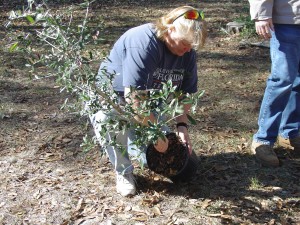
Author Sheila Dunning removes tree from nursery pot and prepares for planting.
Photo courtesy of UF/IFAS Okaloosa County Extension
The best time to plant a tree is twenty years ago. The second best time is Arbor Day 2014. Florida recognizes the event on the third Friday in January, so the next one is January 17, 2014.
Arbor Day is an annual observance that celebrates the role of trees in our lives and promotes tree planting and care. As a formal holiday, it was first observed on April 10, 1872 in the state of Nebraska. Today, every state and many countries join in the recognition of trees impact on people and the environment.
Trees are the longest living organisms on the planet and one of the earth’s greatest natural resources. They keep our air supply clean, reduce noise pollution, improve water quality, help prevent erosion, provide food and building materials, create shade, and help make our landscapes look beautiful. A single tree produces approximately 260 pounds of oxygen per year. That means two mature trees can supply enough oxygen annually to support a family of four.
The idea for Arbor Day in the U.S. began with Julius Sterling Morton. In 1854, he moved from Detroit to the area that is now the state of Nebraska. J. Sterling Morton was a journalist and nature lover who noticed that there were virtually no trees in Nebraska. He wrote and spoke about environmental stewardship and encouraged everyone to plant trees. Morton emphasized that trees were needed to act as windbreaks, to stabilize the soil, to provide shade, as well as, fuel and building materials for the early pioneers to prosper in the developing state.
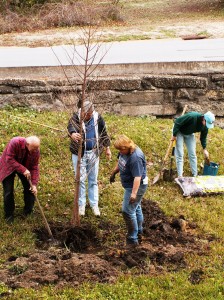
Sheila works with homeowners to properly install trees. Proper size holes and correct height are important considerations. Click image to learn more. Photo courtesy of UF/IFAS Okaloosa County Extension.
In 1872, The State Board of Agriculture accepted a resolution by J. Sterling Morton “to set aside one day to plant trees, both forest and fruit.” On April 10, 1872 one million trees were planted in Nebraska in honor of the first Arbor Day. Shortly after the 1872 observance, several other states passed legislation to observe Arbor Day. By 1920, 45 states and territories celebrated Arbor Day. Richard Nixon proclaimed the last Friday in April as National Arbor Day during his presidency in 1970.
Today, all 50 states in the U.S. have official Arbor Day, usually at a time of year that has the correct climatological conditions for planting trees. For Florida, the ideal tree planting time is January, so Florida’s Arbor Day is celebrated on the third Friday of the month. Similar events are observed throughout the world. In Israel it is the Tu B Shevat (New Year for Trees) on January 16, 2014. Germany has Tag des Baumes on April 25. Japan and Korea celebrate an entire week in April. Even, Iceland, one of the most treeless countries, in the world observes Student’s Afforestation Day.
Trees planted on Arbor Day show a concern for future generations. The simple act of planting a tree represents a belief that the tree will grow and some day provide wood products, wildlife habitat erosion control, shelter from wind and sun, beauty, and inspiration for ourselves and our children.

Trees provide us with many benefits: Across multiple generations they provide beauty, stormwater and sound abatement, and of course fresh air and oxygen.
Photo by Sheila Dunning.
“It is well that you should celebrate your Arbor Day thoughtfully, for within your lifetime the nation’s need of trees will become serious. We of an older generation can get along with what we have, though with growing hardship; but in your full manhood and womanhood you will want what nature once so bountifully supplied and man so thoughtlessly destroyed; and because of that want you will reproach us, not for what we have used, but for what we have wasted.”
~Theodore Roosevelt, 1907 Arbor Day Message
To learn more about Florida’s native trees and how to select appropriate trees for your home or property visit http://hort.ufl.edu/woody/species.shtml
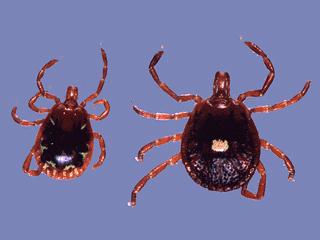
by Jennifer Bearden | Dec 13, 2013
This fall remains mild despite a couple of recent frosty mornings.
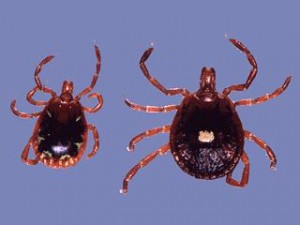
Lone Star Ticks carry Southern Tick Associated Rash Illness. Photo Courtesy of UF/IFAS Communications
With mild temperatures comes ticks. Ticks carry and transmit several diseases.
Brown dog ticks are found mainly on dogs and can carry Rocky Mountain Spotted Fever.
American dog ticks are also usually found on dogs but will also attach to other mammals and humans. They also can transmit Rocky Mountain Spotted Fever. American dog ticks can cause paralysis when they attach to the base of the skull or spinal column. Recovery usually occurs within 24 hours of tick removal.
Gulf Coast Ticks are similar to the American dog tick with larger mouthparts. They transmit a less severe relative of Rocky Mountain Spotted Fever. Gulf Coast Ticks are commonly found on the ears of large mammals such as horses and cattle.
Lone Star Tick is the most common human-biting tick in Florida. They transmit Southern Tick Associated Rash Illness which is similar to Lyme disease.
Black-legged tick, also called deer tick, is most commonly known as the carrier of Lyme disease.
Here are a few ways to prevent tick-borne illnesses:
- Remove ticks as soon as possible
- Wear light colored clothing so ticks can easily be seen
- Keep all clothing buttoned, zipped and tucked-in
- Use Repellents with 20-30% DEET on exposed skin
- Apply Permethrins to clothing and allow them to dry before wearing
- Avoid brushing against plants in tick-infested areas
- Clear brush along pathways and walk in the middle of pathway
If you are bitten by a tick or develop symptoms, contact your physician. Early diagnosis is best and makes treating tick disease easier and more effective.
[youtube=http://www.youtube.com/watch?v=tbIn_cxTlJQ]
by Rick O'Connor | Jul 20, 2013
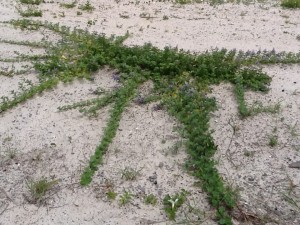
Beach vitex expands its woody rhizomes aggressively; it can actually grow over sidewalks and driveways.
It’s actually a pretty plant, this Beach Vitex (Vitex rotundifolia), and it is very good at stabilizing eroding dunes. In the 1990’s, the state of South Carolina planted this shrub to help restore dunes lost during hurricanes. It was selected because of salt tolerance, production of woody rhizomes (runners) that extend over 60 feet to trap sand, and the beautiful purple flowers that attract beneficial insects; it seemed perfect! However, folks along the Atlantic coast had no idea how invasive it would become a few years later. Residents discovered that it chokes out many of the native species such as sea rocket and sea oats producing an area of only this plant.
It is now causing problems for sea turtles. As you can see in some of these photos, the plant grows over the fore-dune, blocking access for nesting. Beach Vitex grows so aggressively that during the 60 day incubation time many turtle nests are overgrown, entrapping the hatchlings. Some have been found dead, entangled within the rhizome mats. The Beach Vitex “invasion” has become so bad that South Carolina developed a Vitex Task Force to deal with the problem.
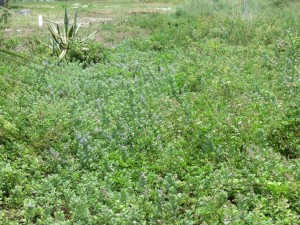
This yard on Pensacola Beach has become overrun by vitex.
Is this a problem for Florida?
According to the records the Early Detection and Distribution Mapping System EDDmaps.com, Beach Vitex is distributed northward to the Chesapeake Bay area and south to Jacksonville. It is found in coastal Alabama and there is one record of the plant in Escambia County.
With so few records in Florida it is not currently listed as an invasive species in our state and there is no program set up to control it. However the Sea Grant Extension Agent in Escambia County, Rick O’Connor, was alerted in 2013 that vitex was in Gulf Breeze, Florida (Santa Rosa County) and possibly on Santa Rosa Island (Escambia County).
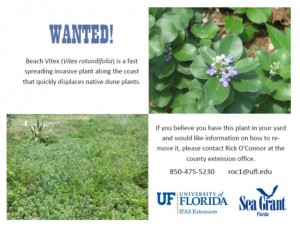
Please circulate to area residents to provide visual identification of Beach Vitex. Contact your Extension Office for control options and help reduce it’s impact on native species.
A “Wanted Poster” was developed by O’Connor to post in the coastal communities of Escambia and Santa Rosa counties to see if the plant was more common than the records indicated. At this time, six properties on Santa Rosa Island have confirmed records of Vitex and two more will be surveyed soon. The wanted poster program was published in the local newspaper which reached the east coast of Florida. Reports from that coast indicate that it has extended south into Volusia County. Okaloosa/Walton Sea Grant Agent Brooke Saari is posting the wanted poster in those counties to see if the plant has reached their coasts.
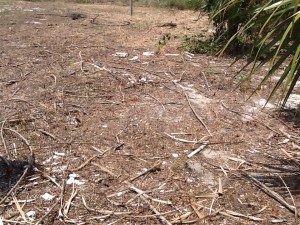
The owner of this yard mowed the vitex. However the woody rhizomes are still present. They will need to either dig this up or use multiple chemical applications to completely remove.
Anyone along the coast of the Florida Panhandle who feels they may have this plant can contact either Rick O’Connor (850-475-5230; roc1@ufl.edu) or Brooke Saari (850-689-5850; bsaari@ufl.edu) and we can confirm identification. The plant is not currently listed as invasive in our state and removal is not required. However, based on the experience in the Carolina’s and other invasive species, if you wish to eradicate this plant doing so early is important. It is much less labor intensive and less costly when there are few plants. If you do choose to remove it please contact your local Extension office first. We can provide methods of successful removal. We would also like to photograph and log the record on EDDmaps.
Editor’s note: Rick provided all the photos in this article.


















